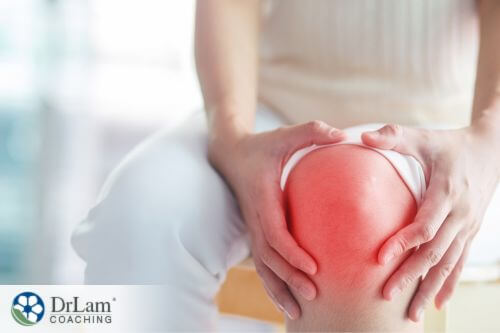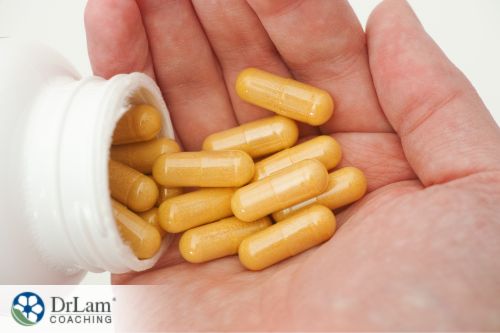 Whether diagnosed with osteoarthritis or rheumatoid arthritis, one thing remains the same: you have a condition that could become debilitating. It could affect all aspects of your life due to crippling pain and unsightly joint swelling. Both these conditions fall under the umbrella term ‘arthritis’. As a result, many people have a misconception that they have a close relationship. But nothing could be further from the truth. So, what is the low-down on osteoarthritis vs rheumatoid arthritis, and what can we do about them?
Whether diagnosed with osteoarthritis or rheumatoid arthritis, one thing remains the same: you have a condition that could become debilitating. It could affect all aspects of your life due to crippling pain and unsightly joint swelling. Both these conditions fall under the umbrella term ‘arthritis’. As a result, many people have a misconception that they have a close relationship. But nothing could be further from the truth. So, what is the low-down on osteoarthritis vs rheumatoid arthritis, and what can we do about them?
The symptoms associated with these two health issues have many similarities. Yet the conditions have different causes. To understand these differences, we need to look at osteoarthritis vs rheumatoid arthritis individually.
Osteoarthritis results from wear and tear on your body. Over time, the cartilage in your knees, for example, breaks down. When the cartilage breaks down, the result can be bones rubbing against each other due to a loss of their protective padding - cartilage. Because of the absence of cartilaginous padding, and thus lack of support in joints, the synovial membrane that covers these joints experiences inflammation.1
Osteoarthritis only tends to affect specific joints. It does not affect your entire body.
Rheumatoid arthritis vastly differs from osteoarthritis. This chronic inflammatory disorder affects more than just your joints. It can affect multiple body systems. These include the eyes, lungs, blood vessels, immune system, nervous system, skin, and even heart.
Because rheumatoid arthritis is an autoimmune disorder, if you have this condition, your immune system attacks your own body. In the joints, the condition can result in inflammation in the lining of the joints that not only causes pain and swelling, but that in the long run may cause deterioration of the bone in those areas.2
When it comes to osteoarthritis vs rheumatoid arthritis, the first affects only certain joints, whereas the latter could ultimately affect your entire body.
Osteoarthritis vs Rheumatoid Arthritis: The Causes/Risks
The causes of osteoarthritis vs rheumatoid arthritis are vastly different.
The most common causes of osteoarthritis include the following:
In contrast, there is no known definite cause of rheumatoid arthritis, although people with certain genes may have a higher risk of developing the condition. Your risk of developing the condition may increase under the following conditions:
While osteoarthritis and rheumatoid arthritis may share many similarities, many differences also occur.
These are common symptoms of osteoarthritis. Please note that these symptoms tend to develop slowly at first and worsen as time passes.
 Feelings of tenderness around affected joints when applying light pressure.
Feelings of tenderness around affected joints when applying light pressure.Although two distinctly different health issues, osteoarthritis and rheumatoid arthritis have many things in common. Two of these commonalities are their effect on, and response to, your NeuroEndoMetabolic (NEM) stress response.
Your body first experiences stress in the brain. This stress could result from both internal and external sources. Once your brain identifies stress, your Hypothalamic-Pituitary-Adrenal (HPA) axis sends chemical messengers to various parts of your body to deal with the situation. This results in the activation of your NEM stress response. This automatic reaction affects multiple body systems and slows down certain bodily processes not deemed essential to preserving your life.
The NEM stress response period may see hormonal changes taking place. Your blood pressure may increase. Your breathing may change. And your immune system will get a kick start to protect your body against any threats.
The occurrence of inflammation is a common result of an immune system in action. It is, in fact, your body’s way of indicating that it is trying to deal with a stressful situation. Pain, redness, and swelling are common indicators of inflammation.
However, chronic inflammation and stress can lead to problems. One common problem is Adrenal Fatigue Syndrome, the non-Addison's form of adrenal dysfunction, where the body's stress response cannot keep up with life's chronic stressors. This can also worsen arthritis.
With regard to osteoarthritis vs rheumatoid arthritis, the inflammatory process differs. With osteoarthritis, inflammation occurs as a result of an injury due to various causes on a specific joint. In the case of rheumatoid arthritis, however, you have a situation where your body attacks itself in an erroneous belief of danger. This means something is wrong with your immune system. It is not acting the way it should.
Ultimately, constant inflammation itself becomes a stressor on your body, and can worsen stress and both osteoarthritis and rheumatoid arthritis.
No known fix exists for either of the two conditions. Standard procedures in conventional medicine focus on addressing the pain and inflammation associated with both types of arthritis.
In the case of osteoarthritis, conventional medicine advocates the following:
 Light land-based and water-based exercise focusing on strength training and flexibility.
Light land-based and water-based exercise focusing on strength training and flexibility.Current protocols advocated by conventional medicine for rheumatoid arthritis include the following:
However, do note that when taking conventional medications for osteoarthritis vs rheumatoid arthritis: these drugs all have side effects. Some of them could result in severe repercussions if not used judiciously. Please research and consult your healthcare provider about possible side effects and the effects of long-term use.
A natural approach to addressing osteoarthritis vs rheumatoid arthritis typically concentrates on reducing pain and inflammation.
Whether battling osteoarthritis vs rheumatoid arthritis, following a good, wholesome diet that aids weight loss if you carry extra pounds is important. Extra weight can put more stress on inflamed, painful joints.
One helpful diet is the AIP (Autoimmune Protocol) diet, which aims at reducing inflammation. This diet may also reduce the symptoms associated with autoimmune disorders like rheumatoid arthritis. The diet is an elimination diet. You eliminate foods that promote inflammation from your diet and reintroduce them gradually to see whether they influence your health. Foods you are typically encouraged to eat when on this diet have a calming effect on inflammation. These include:
Try to opt for foods organic if possible.
When it comes to osteoarthritis vs rheumatoid arthritis, exercise protocols tend to have similarities. It is not advised that you do any form of strenuous training when suffering from either of the conditions. Strenuous exercise may exacerbate the condition by putting added stress onto already stressed joints and promote further pain and inflammation.
But this does not mean you should do no exercise at all. Some types of exercise may benefit those with these two conditions by reducing inflammation. This is because they may boost your immune response and, in so doing, have an anti-inflammatory effect on cells. Exercises to consider include yoga, resistance training, and swimming.
 One should, ideally, receive all the vitamins, minerals, and other nutrients your body needs from your diet. However, taking certain supplements may help make up for any shortfalls in your diet and contribute to reducing the inflammation and pain associated with osteoarthritis vs rheumatoid arthritis.
One should, ideally, receive all the vitamins, minerals, and other nutrients your body needs from your diet. However, taking certain supplements may help make up for any shortfalls in your diet and contribute to reducing the inflammation and pain associated with osteoarthritis vs rheumatoid arthritis.
Glucosamine and boswellia, for example, are two supplements known for their ability to fight joint pain. Furthermore, glucosamine supports cartilage health and has an anti-inflammatory effect, while boswellia also has an anti-inflammatory function. You can find both these and other beneficial ingredients in Joint Formula, a comprehensive joint support formula.
Another strong anti-inflammatory, curcumin, is found in LipoNano Curcutrol. This supplement combines liposomal curcumin and resveratrol, to provide anti-inflammatory support to your whole body. It is also good for your heart health.
Because inflammation usually has a gut connection, looking after your gut health is also crucial when addressing either of these two conditions. Herbs like turmeric, ginger, and various others have prebiotic benefits and help balance your gut microbiome. FermPlex P contains these, and other calming herbs that promote gut health through addressing issues in your gut microbiome.
Omega-3 fatty acids may help reduce inflammation associated with these two health issues. This fatty acid may reduce your immune system's production of inflammatory messenger molecules. While increasing your consumption of fatty fish like sardines, salmon, or mackerel would prove ideal, it is not always possible. Taking an omega-3 fatty acid supplement may thus help you obtain the needed amounts.
Many people, especially older adults, can experience deficiencies in vitamins essential for body repair and protection. Vitamins C and E, for example, protect your cartilage from damage while supporting its formation.
Furthermore, vitamin A, B vitamins, boron, and copper are needed by your body to produce cartilage and maintain its effectiveness. Deficiencies in any of these could lead to accelerated degeneration of your joints. Supplementing with these may thus reduce the speed at which joint damage occurs.
While most supplements are safe for many people, they do not come without risks. You should thus always pay strict attention to recommended dosages before starting with a course.
We also strongly recommend that you only start supplementing after first talking to your primary healthcare provider. He or she is best able to determine whether a supplement would work for you as well as the dosage. Many natural supplements could also interfere with medications you may use or not suit you due to other existing healthcare issues.
While we associate pain and inflammation with both osteoarthritis vs rheumatoid arthritis, key differences occur. Osteoarthritis results from some sort of injury to the joints affected. In contrast, rheumatoid arthritis is a systemic inflammatory disorder that could affect not only joints but entire body systems. No cure exists for either condition, although you can do much to address the pain and inflammation experienced with both osteoarthritis vs rheumatoid arthritis.
If you would like to know more about osteoarthritis vs rheumatoid arthritis and how to go about dealing with these conditions, the team at Dr. Lam Coaching can help. We offer a free, no-obligation phone consultation at +1 (626) 571-1234. We will gladly answer any questions you may have. You can also contact us by clicking here.
Sen, Rouhin. "Osteoarthritis." StatPearls - NCBI Bookshelf, 20 Feb. 2023, www.ncbi.nlm.nih.gov/books/NBK482326/.
Chauhan, Krati. "Rheumatoid Arthritis." StatPearls - NCBI Bookshelf, 25 May 2023, www.ncbi.nlm.nih.gov/books/NBK441999.
Yu, Shirley P., and David J. Hunter. "Managing Osteoarthritis." Australian Prescriber, vol. 115–119, no. 4, 1 Aug. 2015, doi.org/10.18773/austprescr.2015.039.
Bullock, Jacqueline, et al. "Rheumatoid Arthritis: A Brief Overview of the Treatment." Medical Principles and Practice, vol. 27, no. 6, 2 Sept. 2018, pp. 501–507, ncbi.nlm.nih.gov/pmc/articles/PMC6422329/, doi.org/10.1159/.
Osteoarthritis and rheumatoid arthritis both have inflammation in common. Inflammation is often one of your body’s ways of indicating adrenals in crises.
